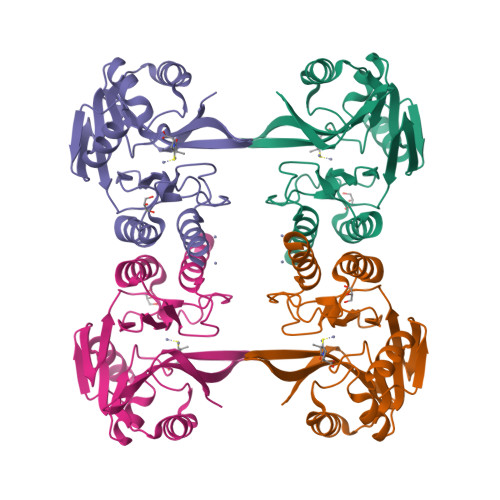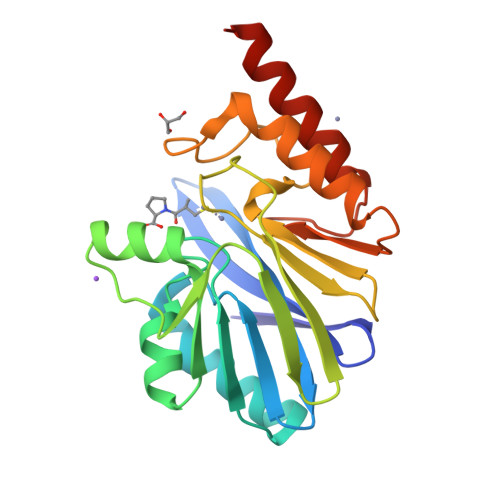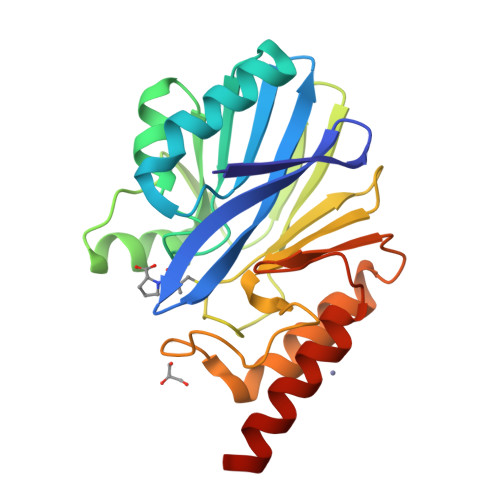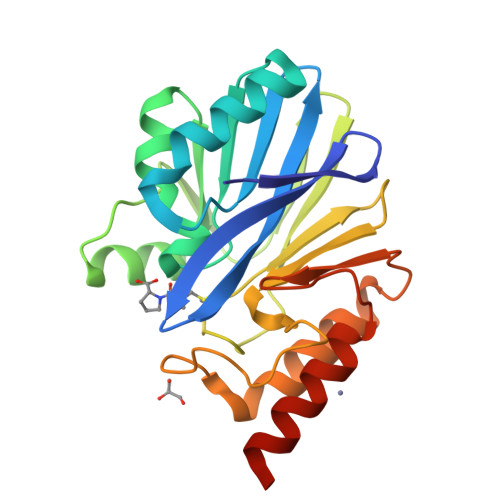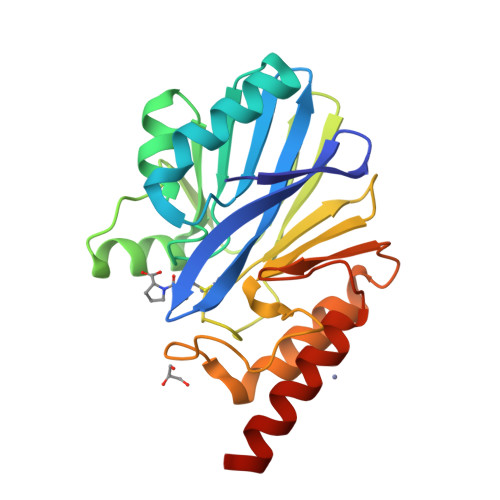The 1.5 A structure of Chryseobacterium meningosepticum Zn-beta-lactamase in complex with the inhibitor, D-captopril
Garcia-Saez, I., Hopkins, J., Papamicael, C., Franceschini, N., Amicosante, G., Rossolini, G.M., Galleni, M., Frere, J.M., Dideberg, O.(2003) J Biological Chem 278: 23868-23873
- PubMed: 12684522
- DOI: https://doi.org/10.1074/jbc.M301062200
- Primary Citation of Related Structures:
1M2X - PubMed Abstract:
The crystal structure of the class-B beta-lactamase, BlaB, from the pathogenic bacterium, Chryseobacterium meningosepticum, in complex with the inhibitor, d-captopril, has been solved at 1.5-A resolution. The enzyme has the typical alphabeta/betaalpha metallo-beta-lactamase fold and the characteristic two metal binding sites of members of the subclass B1, in which two Zn2+ ions were identified. d-Captopril, a diastereoisomer of the commercial drug, captopril, acts as an inhibitor by displacing the catalytic hydroxyl ion required for antibiotic hydrolysis and intercalating its sulfhydryl group between the two Zn2+ ions. Interestingly, d-captopril is located on one side of the active site cleft. The x-ray structure of the complex of the closely related enzyme, IMP-1, with a mercaptocarboxylate inhibitor, which also contains a sulfhydryl group bound to the two Zn2+ ions, shows the ligand to be located on the opposite side of the active site cleft. A molecule generated by fusion of these two inhibitors would cover the entire cleft, suggesting an interesting approach to the design of highly specific inhibitors.
Organizational Affiliation:
Laboratoire de Cristallographie Macromoléculaire, Institut de Biologie Structurale Jean-Pierre Ebel (CNRS-Commissariat à l'Energie Atomique, Saclay, France.








